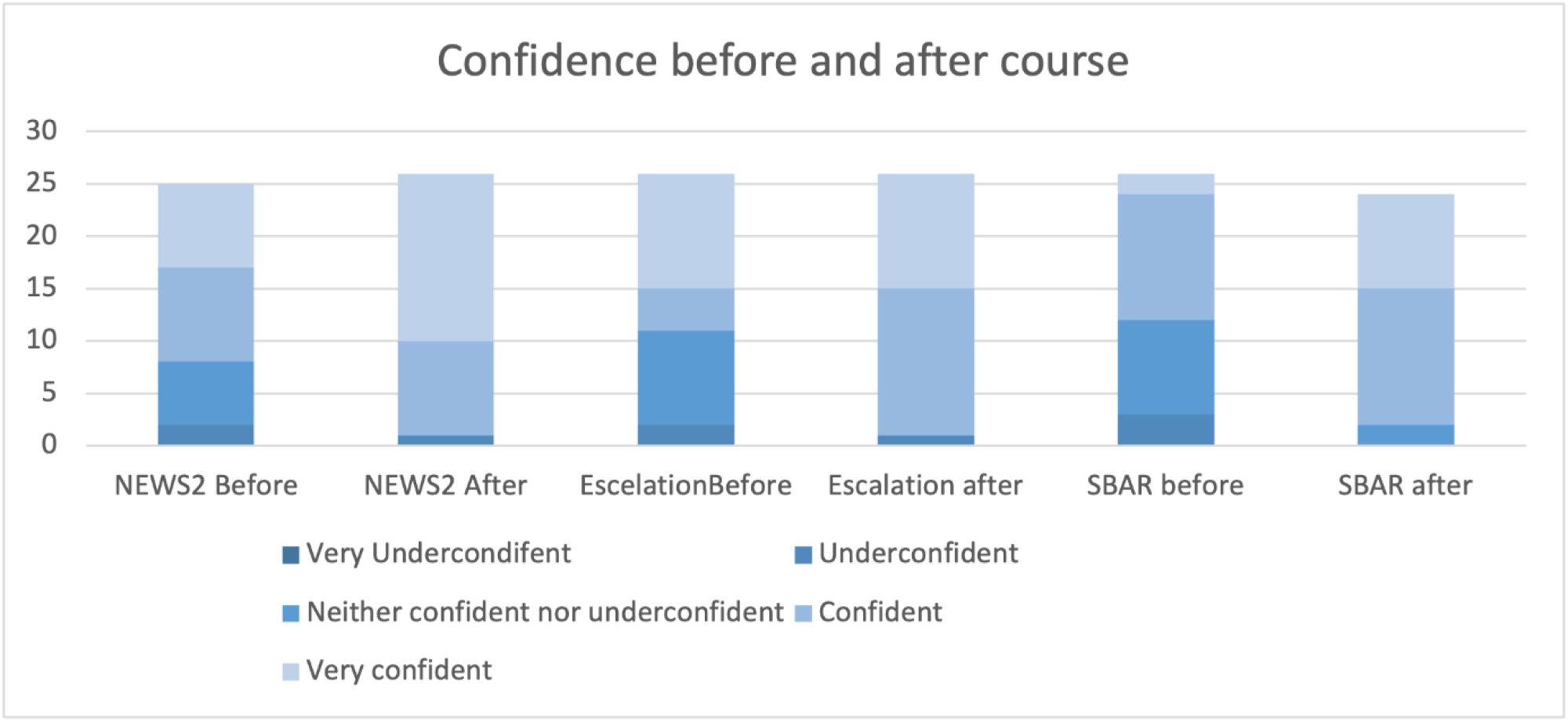
The National Early Warning Score (NEWS) is used to collate measurements of patients’ vital functions, identifying patients who require management to prevent deterioration [1]. Not following NEWS escalation protocols is linked to adverse events and may occur due to prioritising clinical judgement over scores and communication failures [2]. Patients with learning disabilities are even more at risk of avoidable adverse events in hospital, but education to improve the understanding of the needs of these patients may be a protection against this [3]. This research assessed the improved confidence of nurses in escalation following a simulation-based course focused on escalating an unwell patient with learning difficulties.
The course started with an interactive talk on how to measure NEWS by a nurse educator. A simulation-based video we created of a mismanaged scenario involving a patient with learning disabilities was shown, followed by a discussion about handover using the SBAR structure. The simulation required the attendee accurately calculating a NEWS score of an actor connected to a monitor we could control and escalate to a doctor over the phone. This simulation was shown in real time to the other attendees, and the debriefing was facilitated by a doctor trained in debriefing. Pre- and post-course questionnaires were completed by attendees to assess their nursing experience, confidence in assessing NEWS, and escalation rated on a scale of 0 (very unconfident) to 5 (very confident).
The course was run 6 times for a total of 26 nurses. The median length of nursing experience was 17 months (range 1–249months). More attendees were confident (defined as 4 or 5 out of 5 in the confidence scale) in assessing NEWS, escalating to the medical team, and using SBAR post-course (96%, 96%, and 93% respectively) compared to pre-course (68%, 57%, and 54% respectively), which can be seen in figure 1. Improvements were seen in calculation of NEWS and the use of SBAR in freeform written handovers between pre- and post-course questionnaires. Five respondents suggested involving doctors or other members of the multidisciplinary team in the course.


This simulation-based course focusing on care of a patient with learning disabilities has improved confidence in assessing NEWS and escalation with a structured handover to the medical team. Further research should be focused on multidisciplinary simulation on escalation in the acute care setting, and how including cases involving learning disabilities improves outcomes in this at-risk group.
1. Royal College of Physicians. National Early Warning Score (NEWS) 2 Standardising the assessment of acute-illness severity in the NHS. Updated report of a working party. London: 2017. www.rcplondon.ac.uk
2. Ede J, Jeffs E, Vollam S, Watkinson P. A qualitative exploration of escalation of care in the acute ward setting. Nursing in Critical Care. 2020;25:171–178.
3. Louch G, Albutt A, Harlow-Trigg J, Moore S, Smyth K, Ramsey L, O’Hara JK. Exploring patient safety outcomes for people with learning disabilities in acute hospital settings: a scoping review. BMJ Open 2021;11:47102.